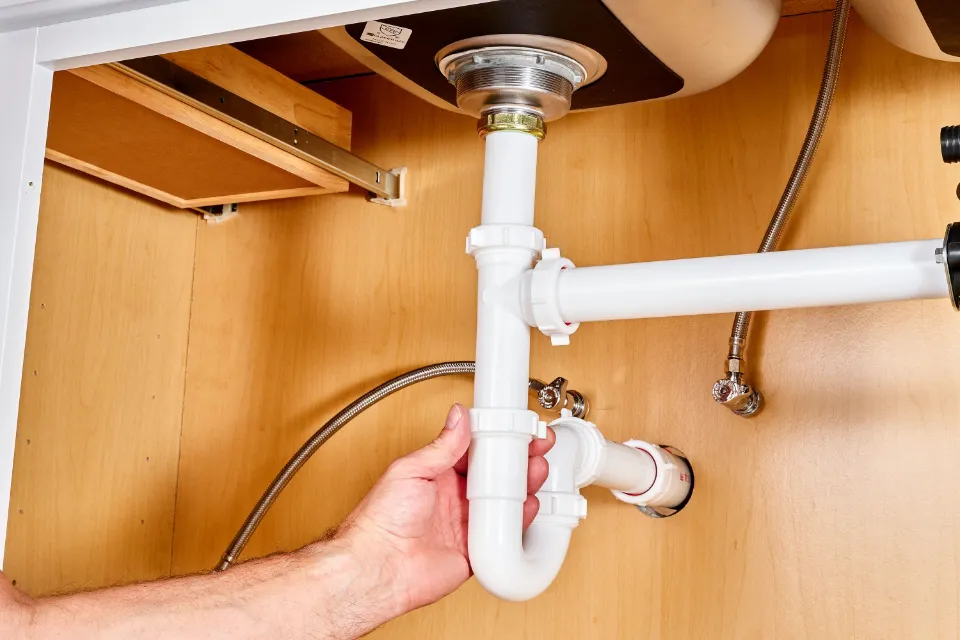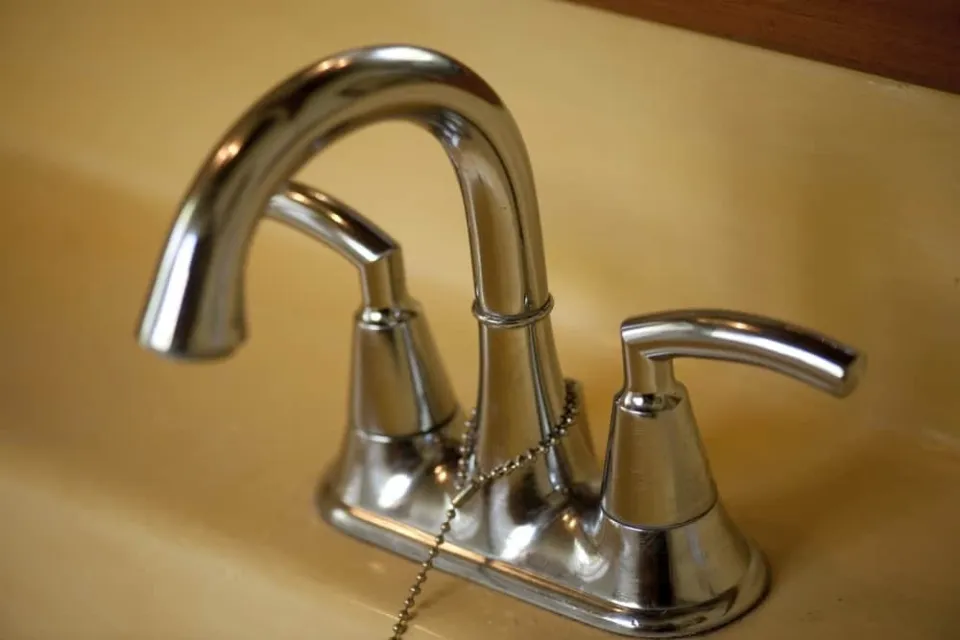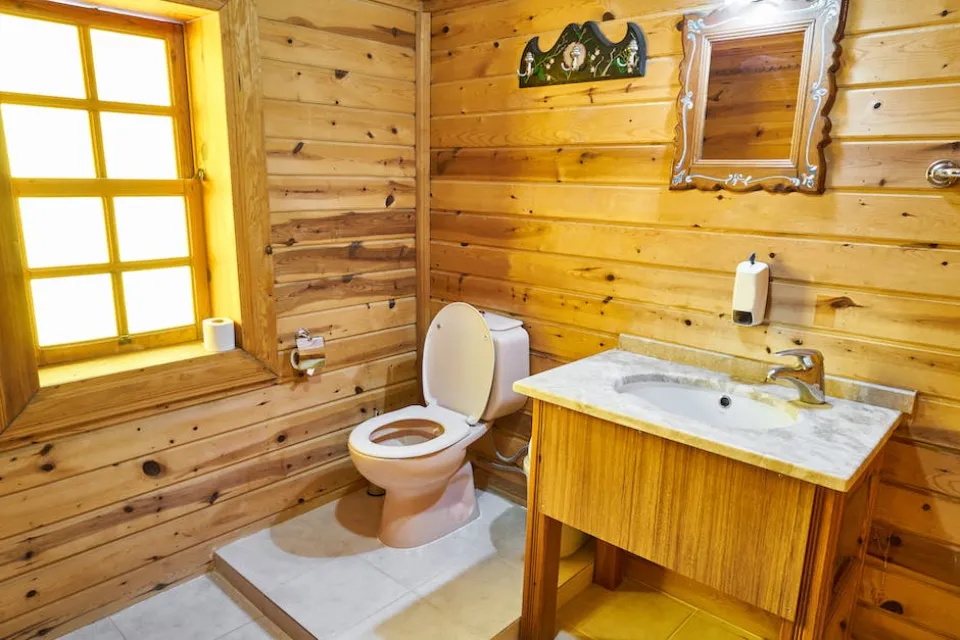Cleaning a kitchen sink drain will undoubtedly make those routine cleaning and cooking tasks a little more enjoyable. Below will tell you how to clean kitchen sink drains.
To begin with, you are supposed to prepare tools. Then, unclog the sink, make a baking soda and water mix, add white vinegar and pour the mix down the drain, and apply an all-purpose cleaning spray.
Continue reading.
How to Clean Kitchen Sink Drains?
There’s nothing more annoying than a dirty, blocked sink drain, but by working this job into your kitchen cleaning routine, it needn’t ever be a problem.
You will need:
- Rubber gloves
- Baking soda
- White vinegar
- Cleaning spray
- Water
- Non-abrasive cloth
Unclog the Sink
The first thing to do is to unclog your sink of any obvious blockages before cleaning. If the issue isn’t so much cleanliness as a faulty drain, you may need to look to change a kitchen sink drain.

Make a Baking Soda and Water Mix
Cleaning with baking soda is always a great first step.
‘About a ¼ cup of baking soda should be added after bringing a large pot of water to a boil. You’ll need to take quick action because this will start to fizz, warns Jelina. ‘Directly into the drain, pour this mixture.’
Add White Vinegar and Pour the Mix Down the Drain
Cleaning with vinegar is next.
‘Add about a half-cup of white vinegar, suggests Jelina. ‘While this solution is working at its best, you may hear some gurgling sounds.’
The ideal combination for unclogging a drain and eliminating offensive odors is baking soda and white vinegar.
To let it do its magic, wait 10 to 15 minutes. For best results, Jelina continues, you might need to repeat this procedure three times.’
Apply An All-Purpose Cleaning Spray
It’s time to add a cleaning spray to the drain and sink to give them a sparkling finish and fresh scent. Or, you can use the baking soda/vinegar mix to clean with.
Jelina says: ‘Once this is complete, spray down your sink generously with a cleaning spray like the Safely Universal Cleaner(opens in new tab). After that, dry the area with a washable cloth.’
How to Clean Kitchen Faucets and Handles?
Regardless of the material, soapy water can be used to clean all faucets and handles. To clean them, use a sponge or brush, and a toothbrush for those particularly difficult-to-reach places.
Still seeing white spots after your scrub? The minerals in your tap water have caused lime buildup in that area. Adding a spoonful of vinegar to the soapy water mixture and doing one final scrub should do the trick.

Tips for Cleaning a Garbage Disposal
Just like the kitchen sink and drain, a garbage disposal requires routine cleaning. Even with a clean drain, grease, grime, and food debris can cause lingering odors and germs to accumulate on the blades, baffle, and other parts of a garbage disposal. It’s time to learn how to properly clean a garbage disposal and maintain it in order to get your kitchen sink truly clean.
A clean garbage disposal also means clearer drain pipes, so cleaning it regularly reduces the chance for that nasty buildup. Cleaning your garbage disposal once a week should take care of the problem, but if you notice any lingering smells, it’s time for a cleaning. Follow these steps to keep your garbage disposal and your drains clean:
Garbage disposals can be kept odor- and stain-free with weekly cleaning.
- As you clean the disposal, turn off the electricity to prevent it from starting.
- As an extra precaution, unplug the disposal if possible.
- Scrub the baffle’s underside and folds using dish soap and an abrasive sponge.
- Debris should be sprayed down the drain after you rinse the sink.
- Use your scrub sponge and dish soap to scrub around the top part of the grinding chamber, rinsing frequently.
- Pour baking soda into the garbage disposal and let it sit for five minutes to absorb lingering odors.
- Clean out the garbage disposal, drain, and sink completely.
Lemon, kosher salt, and ice are excellent at preventing bacteria buildup, odors, and buildup during routine cleaning maintenance. A lemon that has been cut up should be thrown into the garbage disposal along with two cups of ice and two tablespoons of kosher salt. Start the garbage disposal and cold water, then enjoy the soothing sound of the buildup and odors being scrubbed away.
Read about How to Fix a Leaky Kitchen Faucet?
Summary: How to Clean Kitchen Sink Drains?
When you know how to clean kitchen sink drains the right way, you can reduce the amount of buildup that causes odors and germs. You only need some baking soda, distilled white vinegar, a lemon, and some hot water. Here’s how you do it:
- Boil two quarts of water.
- Boiling water should be slowly poured down the drain while wearing oven mitts.
- 1 cup of baking soda should be poured down the drain.
- With hot water from the sink, thoroughly rinse the sink and drain it.
- Pour lemon juice or distilled white vinegar down the drain for additional odor-fighting power.
- Rinse and drain the sink after 30 minutes.
If your kitchen drains haven’t been cleaned in a while, you might need a little more force. To break down the buildup in the drain, think about using a biodegradable drain cleaner. Natural enzymes found in biodegradable cleaners aid in removing food, soap, and grease residue without the use of hazardous chemicals. Many of these cleaners can take up to 24 hours to get the job done, but the payoff is fresh, smooth-running drains and less odor and bacteria.
Frequently Asked Questions
How Often Should You Clean Your Garbage Disposal?
Clean your garbage disposal once a week or every two weeks to prevent build-up and unpleasant smells. A more urgent cleaning is required if your garbage disposal emits a smell between routine cleanings.
Is It Safe to Put Ice Down Your Kitchen Drain?
It is okay to pour regular ice down your kitchen sink. Just keep in mind that putting dry ice down the drain could damage your plumbing or even cause pipes to burst.



